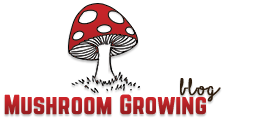Growing Mushrooms at Home My Story and Advice on Startup
Welcome, fellow mushroom enthusiasts! Today, I want to share my personal journey in the mushroom business and the valuable lessons I’ve learned along the way. It all started about two years ago when I decided to grow some mushrooms in my garage. With just $800, I launched my oyster mushroom farm. Now, I am producing edible mushrooms for local chefs and farmers’ markets. Let’s dive into the details of how I built this business from the ground up!
Getting Started: The Initial Investment
When I first got into the mushroom business, I had a simple goal: to grow mushrooms. To kick things off, I bought a small sterilizer and a pressure cooker—specifically, a 21 or 18-quart Presto pressure cooker. This was a fantastic tool that served me well for almost a year before I upgraded to a larger sterilizer. In total, I spent about $600 to create a functional grow chamber.
For those of you wondering about the costs, the smaller chamber I initially built for growing shiitake mushrooms cost around $400. The rest of the equipment added up to about $600. I also started with a glove box before moving on to a flow hood, which significantly improved my efficiency in cultivating mushrooms.
Understanding the Market: Farmers’ Markets vs. Restaurants
Initially, I focused on selling my mushrooms at farmers’ markets. One crucial lesson I learned is the importance of variety. If you’re just selling one type of mushroom, like gray oyster mushrooms, you won’t move as much product. My best sales days were when I offered a variety of mushrooms—shiitake, king oyster, golden oyster, and pink oyster. The vibrant colors and unique textures drew customers in, and I often made over $400 in sales on those days.
However, I quickly realized that the time commitment of working at farmers’ markets wasn’t sustainable for me. As a military professional, my weekdays were already busy, and spending Saturdays at markets took a toll. Plus, my supply was outgrowing my demand. I could only sell about 15 pounds of mushrooms at the market, but I was producing closer to 20 pounds.
That’s when I decided to reach out to local chefs. I learned that high-end restaurants were more likely to appreciate my gourmet mushrooms, and I made it a point to connect with chefs who had the freedom to create unique dishes.
Building Relationships with Chefs
When approaching chefs, I emphasized the quality and uniqueness of my mushrooms. I would call restaurants, ideally targeting those with a plate cost of $12 to $20. I sought out local, chef-owned establishments where I could speak directly to the person who had the power to order my mushrooms.
During my initial conversations, I would ask if I could bring in a sample of my mushrooms. I made it a point to have invoices prepared to streamline the purchasing process. For example, I would deliver five pounds of mushrooms for $40, priced at $8 per pound wholesale. I always encouraged chefs to try a small sample before making a larger order, knowing that once they tasted the quality, they’d be more likely to buy.
In cases where chefs were unsure, I would offer a small sample in a cardboard bin, ensuring they had a positive experience without risking my reusable bins. I set a minimum order of five pounds to make the delivery worthwhile, as I didn’t want to drive around for small orders.
Networking and Growing Demand
Once I established relationships with several chefs, I asked them for referrals. Chefs often know each other and can recommend your products within their circles. This word-of-mouth strategy significantly helped grow my business. As demand increased, I knew I needed to expand my operations.
I eventually invested in a larger grow chamber, which cost around $2,000. This upgrade allowed me to produce up to 75 pounds of mushrooms weekly, and I aimed to reach 100 pounds with further enhancements. The initial investment paid off within two to three months, thanks to the increased production capacity.
Managing Finances and Invoices
As my business grew, managing invoices became crucial. A significant percentage of chefs pay with checks, often taking weeks to process. To keep track of open invoices, I utilized QuickBooks, which made it easy to invoice and monitor payments. This software is affordable, around $10 to $11 per month, and simplifies tax season by integrating with TurboTax.
Keeping track of my finances was essential, especially since I was dealing with thousands of dollars in open invoices. QuickBooks allowed me to access invoice details quickly, making it easier to communicate with chefs about payments.
Streamlining Deliveries
To cut down on my delivery time, I partnered with local farmers to streamline the process. Instead of making multiple trips, we took turns delivering each other’s products. For instance, I would pick up microgreens from one farmer while delivering mushrooms to a chef. This system not only saved time but also provided chefs with a fresher, local product.
Working with local farmers created a network that benefited everyone involved. We shared customers, and chefs received high-quality, fresh produce without the hassle of dealing with multiple suppliers. This collaboration allowed me to focus on growing mushrooms while still providing excellent service to my clients.
Expanding My Product Line
As my mushroom business grew, I explored other products to offer. I began experimenting with dried mushrooms, mushroom supplements, and even mushroom jerky. This diversification not only increased my revenue streams but also helped me reach a broader audience.
Selling fresh mushrooms is the simplest approach, but value-added products can extend shelf life and widen market appeal. Dried mushrooms can be sold at a higher price, and mushroom jerky has become popular among health-conscious consumers.
Conclusion: The Future of My Mushroom Business
Reflecting on my journey, I can confidently say that starting a mushroom business has been one of the most rewarding experiences of my life. From humble beginnings in my garage to supplying gourmet mushrooms to local chefs, every step has taught me valuable lessons about entrepreneurship, networking, and the importance of quality.
As I look to the future, I remain committed to expanding my mushroom business. With plans to upgrade my sterilizer and produce even more mushrooms, I am excited about the opportunities ahead. If you’re considering starting your own mushroom business, remember that perseverance, creativity, and community connections are key to success.
Thanks for joining me on this journey! If you have any questions or want to learn more about starting your own mushroom business, feel free to reach out. Happy growing!




Pingback: Growing Mushrooms at Home My Story and Advice on Startup - Mushroom Mob